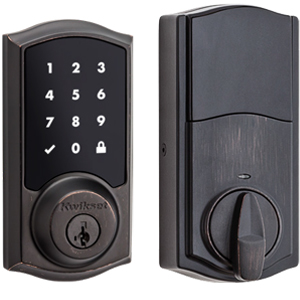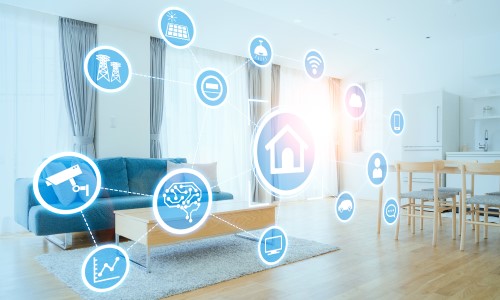
For homeowners who love the outdoors, but do not want pests to invade their home, an adjustable height screen is a great choice. This is a popular option for homes that have children or pets. They provide the security of a regular door, with the flexibility and convenience of a screen.
How to Measure for an Adjustable Height Screen Door
The first step in measuring for a new screen door is to determine the exact dimensions of your existing door frame. Use a tape measurement to measure both the height and the width of your frame. This will give you the exact measurements that you need to purchase a screen door of the proper size.
If you're installing a sliding glass door, it's important to note that the track and rollers on your existing door frame may not be straight or level, which means you will need to subtract a few inches from the measurements for your new door. This will enable the new door slide smoothly and roll easily.

Installing a sliding door screen is the same as installing a regular door. The bottom section of the door must be fitted into the track at the top and then pushed upwards and over to the lower rail. Then, you need to align the rollers inside the track of the frame. You will need to repair any rollers that have gaps or are broken.
Installation is a quick and easy process that only requires basic tools, such as a screwdriver or hammer. Slide the bottom rail up and down a few times, until the door is firmly in place. It's a good idea to move it back and forward a few times, too, in order to ensure that the rollers inside the bottom track are evenly distributed.
How to adjust a Sliding Screen door
The easiest way to adjust a sliding screen door is to loosen the adjustment screws that are located on each side of the screen. You will then need turn them clockwise or in the opposite direction to adjust your door. Once you've achieved the perfect amount of clearance for the door, tighten all the adjustment screws. The door will now be much easier to close and open, so that you can enjoy it more!
Adjustable vertical window screens are easy to install in wood, metal or vinyl double hung windows. They come with a 5/16-inch mill finish frame that has gray squared corners, charcoal fiberglass wire, as well as a black retainer slot. The screens can be ordered in four heights ranging from 8” to 20”, and have an adjustable size that goes from 20” to 47”.

How to Install an Sliding Window Screen
The sliding window screens allow natural light to enter your home, while blocking out the weather. The screens are easy to maintain and durable.
FAQ
What is the best security system?
The best security system depends on the value you place on your home. An inexpensive alarm system that doesn't offer much protection can be chosen. You can go with a basic alarm system that provides limited protection, but you have the option to upgrade to one that has remote monitoring and video surveillance as well as access control.
Can ADT be hacked?
ADT security system remains one of the most trusted home alarm systems. ADT Home Security System continues to be considered the safest option by many customers. They trust its reputation for being a trustworthy company, dedicated to protecting their homes against burglary or fire.
Hackers can also infiltrate organizations, as with everything, and take down trustworthiness. Hackers can infiltrate a network at any time and steal sensitive data. If a hacker manages to infiltrate your network, they can access everything on the computer and modify the important settings. A hacker can delete files, modify passwords or shut down an entire computer system. It is important that you understand that hackers can see things, but not try to gain access to your house. Make sure you have the right information to help protect your system.
Do motion sensors have alarms
There have been motion sensor alarm systems for decades. They have grown in popularity due to increasing burglaries and thefts. These devices can be too costly and do not work well inside cabinets. A motion sensor alarm system can be a great way to protect your home against intruders.
Statistics
- That's probably why Cove has a whopping 98%* customer retention rate. (safewise.com)
- Related questionsHome security systems that are 100% DIY (safewise.com)
- Depending on your insurance, 24/7 professional monitoring may qualify you for as much as 15% off your premium. (safewise.com)
- Most home security companies will charge you around 75% of the remaining term of your contract if you cancel early—and some require 100%.Related questionsWhat type of contract length can I expect from security providers?Home security system cancellation (safewise.com)
External Links
How To
How to Install A Home Security System
A home security camera is a device that monitors your house and alerts you when there's activity. It could include a motion sensor or doorbell camera, smoke detectors, flood alarms, carbon monoxide detectors, burglar alarms, and flood alarms. A home security system usually consists of one or more sensors (e.g., motion detectors), which send signals when they detect movement or sound. The signals are then sent to a control panel where they're monitored and recorded. If there's a problem such as someone breaking into your house or other suspicious activity, the control panel sends an alert via your phone, tablet computer, voice assistant, or computer. You will immediately be notified and can take appropriate action.
Selecting the right sensors for your home is an important step in installing a home security alarm system. There are two main types: passive and active sensors. Passive sensors don’t require batteries. They only pick up sounds, vibrations and other signals from their environment. They can be doorbells or sirens as well as buzzers. Active sensors use electricity to transmit data. Examples of such sensors include cameras and motion sensor.
There are many options for sensors. Each brand has their own pros and cons. Some sensors can withstand extreme weather conditions, while others cannot. Some have built-in speakers that allow you to hear them outside. Others only work inside. Some are simple, while others offer advanced features such as night vision.
After you have decided on the best sensors for your property's needs, you will need to choose a manufacturer. This will ensure that your sensors are compatible. Your local hardware store should have plenty of options to choose from.
Once you've chosen a brand of sensors, you'll need to decide how many you want to buy. Depending on whether you live alone or with your family, most people will start with just one or two sensors. If you are planning to add sensors later on, you may consider purchasing additional sensors.
Next, think about where you want them to go. Do you want them near doors and windows? Do you prefer to keep them away? Before you put them anywhere on your property make sure you get permission. Also, make sure they won't interfere with anything else, like electrical outlets.
Now that you know where you want to put your sensors, you'll need a way to connect them to your control panel. A power adapter or battery package may be required depending on your setup. Once you have everything set up, you'll be ready to monitor your property!